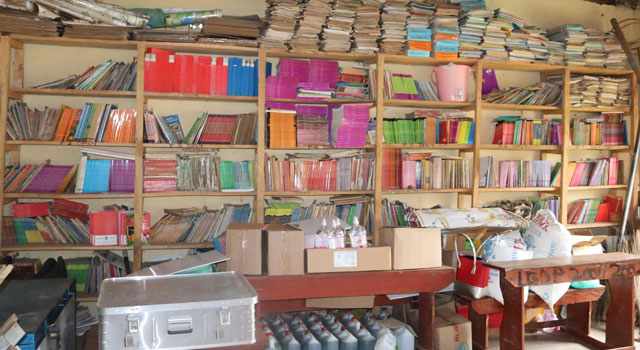
Kampala, Uganda | THE INDEPENDENT | Dr. Kedrace Turyagyenda, the former Director of Education Standards at the Ministry of Education revealed on Wednesday her troubling experience with substandard textbooks currently being used by teachers and learners in schools. Dr. Turyagyenda currently a member of the Education Policy Review Commission recounted discovering a chemistry textbook that had horrible errors and misleading content.
“It’s alarming to see textbooks with misleading content being used in schools, despite their official approval. This is just one example of many similar cases,” Dr. Turyagyenda, a former chemistry teacher noted. Her concerns echo the frustrations of numerous parents and teachers who have long criticized the quality of textbooks, some of which are distributed by the Ministry of Education itself and bear approval marks from the Ministry of Education and the National Curriculum Development Centre (NCDC).
To ensure the quality of materials used in implementing the national curricula, there is an established thorough evaluation process. This procedure is designed to confirm that educational materials are appropriate for use in schools and other educational institutions. Materials submitted for evaluation include a wide range of resources such as textbooks, supplementary course books, readers in various languages, reference materials, instructional guides, workbooks, inspirational materials, non-text materials, and digital content.
According to the National Curriculum Development Centre’s guidelines reviewed by our reporter, once an individual or publisher creates educational materials, they must submit two copies for review. These materials are forwarded to the Quality Assurance and Publishing Department.
“On receipt of proof of payment, the QA&P department puts in place an evaluation team that uses the NCDC evaluation guidelines to carry out the exercise and write a report. The evaluation report is shared with the author,” the guidelines read in part.
In an ideal scenario, a revised edition of the material should be resubmitted to the NCDC along with a detailed report on the changes made by the author. Once the evaluators confirm that the corrections have been appropriately implemented in the revised edition, a certificate of approval is issued to the author.
Given this rigorous process, it raises questions as to how a textbook or other material that carries approval markers and, in some cases, is distributed through official education channels, ends up being labeled as substandard.
Dr. Bernadette Nambi, Deputy Director at NCDC, acknowledged the issue, admitting that the organization has indeed faced problems with textbooks containing significant errors and misleading information. Dr. Nambi pointed out that the current evaluation process has its shortcomings: while many publishers and authors submit their materials for review, NCDC does not currently verify whether the recommendations have been implemented. Additionally, NCDC lacks the authority to recall faulty books once they are in circulation.
Cue out…we have faced.”//The issue of substandard books has also been highlighted by the National Planning Authority (NPA) in their thematic reports, dubbed “Comprehensive Evaluation of the Universal Primary Education (UPE) Policy.” The NPA attributes the ongoing problem to the liberalization of the instructional materials market, which has resulted in an influx of books, some of which do not meet the required standards.
Before the sub-sector’s liberalization in 1993, there was an expectation of rigorous vetting for all books and educational materials. However, this process seems to have significant loopholes, leaving users of textbooks at risk. In their paper, the NPA noted that the loophole is partly due to a policy disconnect between curriculum development and the approval of textbooks and other materials.
Specifically, the final approval of textbooks for curriculum delivery is handled by the Ministry of Education and Sports (MoES) rather than the NCDC, leading to this disconnection.
****
URN
 The Independent Uganda: You get the Truth we Pay the Price
The Independent Uganda: You get the Truth we Pay the Price



